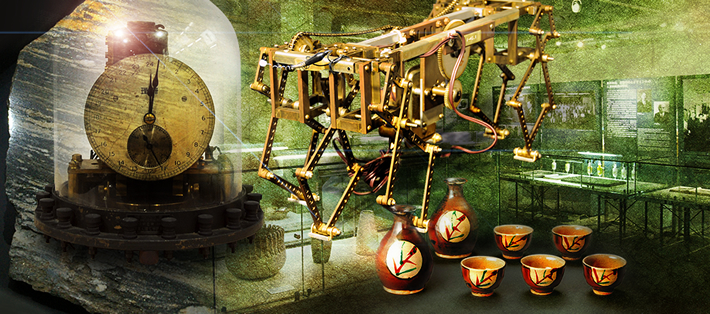
Tokyo Tech Museum was inaugurated on April 1, 2011. Admission-free and open to the public, the museum showcases the Institute's history, education, and research findings. Its dual concept of "human and material heritage" is represented in the form of roughly 600 objects and 6,200 documents.
Six individually unique Exhibition Rooms
The Museum is located in Centennial Hall, the iconic building just inside the Main Gate of Ookayama Campus, across from the train station. The six Exhibition Rooms in the building — two on the basement floor and four on the 2nd floor — are dedicated to significant Tokyo Tech achievements in different fields.
Exhibition Rooms on the 2nd floor
Evolving Earth
This room displays collections of Tokyo Tech's Museum of Evolving Earth, featuring geological materials and research findings regarding the history of the Earth — its life, its oceans, and its atmosphere.
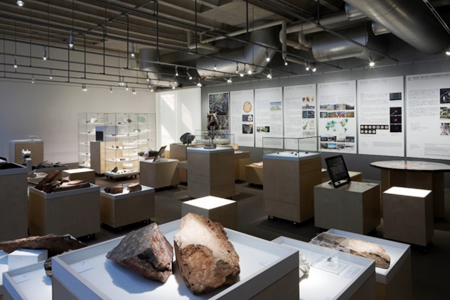
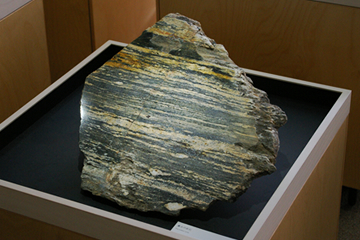
- Oldest rock on Earth
- The Evolving Earth room houses a sample of Acasta gneiss, the oldest rock on Earth. Based on radiometric dating of zircon crystals in the rock, it is believed to be 4.03 billion years old. Found in the Acasta River area of the Northwest Territories of Canada, the rock provides clues regarding Earth's early crust and continents.
Centennial Hall and Kazuo Shinohara
This room is dedicated to world-renowned architect and alumnus, Professor Kazuo Shinohara. Exhibits include his drawings and models of Tokyo Tech's Centennial Hall and private homes, and pieces of furniture designed by Shinohara. Visitors can also trace a quick path through the construction of Centennial Hall.
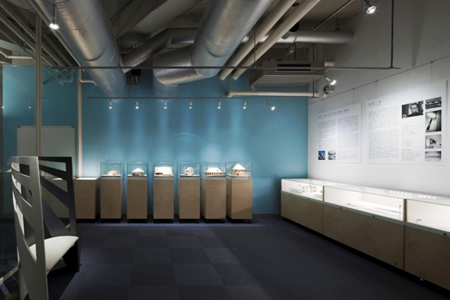
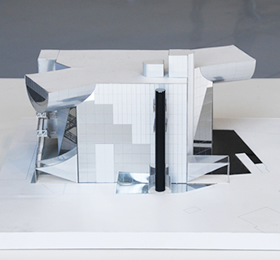
- Model of Centennial Hall
- Kazuo Shinohara (1925 - 2006) exerted a strong influence on the international architecture scene. By the mid-1970s, he was proposing more heterogeneous forms of architecture for the "chaos" of Tokyo, which he preferred to leave alone earlier in his career. Centennial Hall, founded in 1987, showcases the coexistence of two contradictions — "beauty" and "chaos" — in a real urban location. The building is a culmination of Shinohara's work.
Tokyo Vocational School - Tokyo Institute of Technology
This room takes the visitor through the history of Tokyo Tech, first established in 1881 as Tokyo Vocational School. It was renamed Tokyo Technical School in 1890, and then Tokyo Higher Technical School in 1901. The Institute's more than 130-year history is displayed alongside panels that feature three of its noteworthy presidents — Taizo Masaki, Seiichi Tejima, and Koroku Wada.
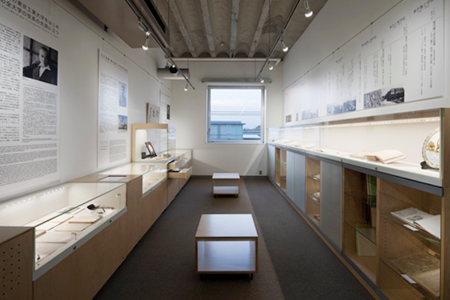
Electrical - Optical Communication
This room highlights the evolution of electronics and photonics development at Tokyo Tech since the late 1920s. A collection of vacuum tubes developed and used at the Institute occupies one wall. The opposite wall is dedicated to Issaku Koga, the father of the Koga cut, Yasuhiro Suematsu's research on optical fiber communication, and Kenichi Iga's discovery of the vertical-cavity surface-emitting laser (VCSEL).
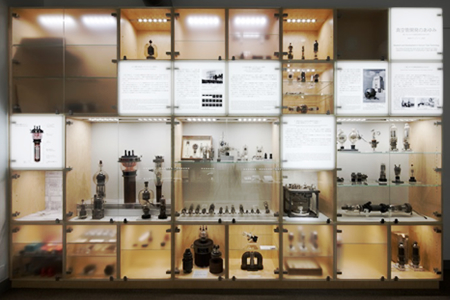
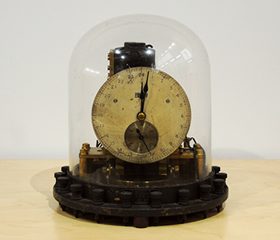
- First model of Koga Quartz Clock, KQ1
- In 1932, Issaku Koga (1899 - 1982), a Tokyo Tech professor at the time, succeeded in inventing a new cutting technique that produced crystal oscillators with very small temperature-dependence, laying the foundations for quartz clocks and wireless communications. Koga developed the first model of the Koga Quartz Clock, KQ1, in 1936, which was displayed at the Paris World Fair a year later.
Exhibition Rooms on the B1 floor
Special Exhibition Room A
Tokyo Tech's long-standing tradition of technical innovation stemmed largely from scientific approaches to techniques in ceramic engineering and textile dyeing, and industrial development through the application of these technologies. The Institute produced three Living National Treasures, or keepers of important intangible Japanese cultural properties — Shoji Hamada, Keisuke Serizawa, and Tatsuzo Shimaoka — whose works are introduced in this room.
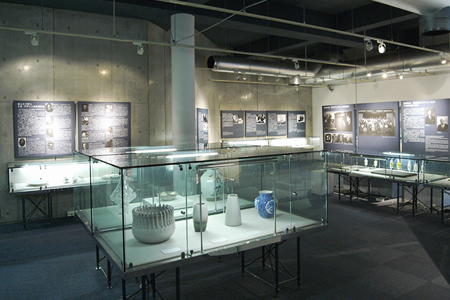
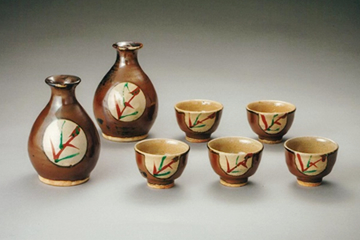
- Sake decanters and cups with kaki glaze and red circle motif by Shoji Hamada, class of 1915
- Shoji Hamada (1894 - 1978) was a graduate of the Department of Ceramics at Tokyo Higher Technical School, one of Tokyo Tech's forerunners. He and another alumnus and renowned potter, Kanjiro Kawai, were leaders of Japan's folk art movement founded by philosopher Soetsu Yanagi, which exalted the simple beauty of utilitarian works by anonymous artisans.
Hamada befriended the British potter Bernard Leach, who lived in Japan at the time and participated in the movement. The two traveled to the United Kingdom in 1920 and established a pottery studio in St. Ives, which continues to operate today as the Leach Pottery. After returning to Japan, Hamada founded his workshop in Mashiko town, Tochigi prefecture. There he produced many powerful works from clay and glazes of Mashiko with simple family kiln techniques.
Special Exhibition Room A also includes displays of Nobel Prize winner Dr. Hideki Shirakawa's conductive polymers, the work of Tokyo Tech's other notable architects, the history of ferrite development at the Institute, among others creations and achievements.
Special Exhibition Room B
This room highlights Tokyo Tech's research in the fields of robotics, holographic technology, research on addendum-modified gears, and textile machines. The room also features One Day, in the Highland, a holographic piece by Dr. Setsuko Ishii, a Tokyo Tech alumna and independent artist.
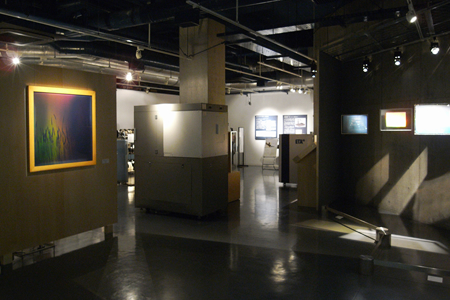
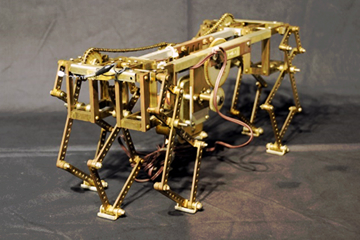
- GAWALK robot
- Visitors can also get a glimpse of the original six-legged GAWALK robot, which was developed in 1968 by Professor Emeritus Masahiro Mori, at the time an associate professor at the University of Tokyo. GAWALK is the first walking robot built by a Japanese university.
New times, new Commons
To open up more versatile space for students, faculty, and the general public, the 1st floor of the Tokyo Tech Museum and Centennial Hall was renewed and transformed into the Learning & Information Commons in the fall of 2015.
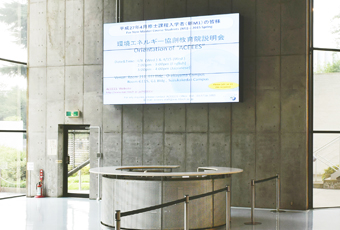
HD wall vision system
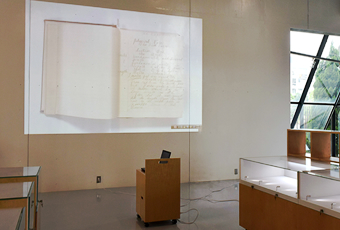
Communication tools
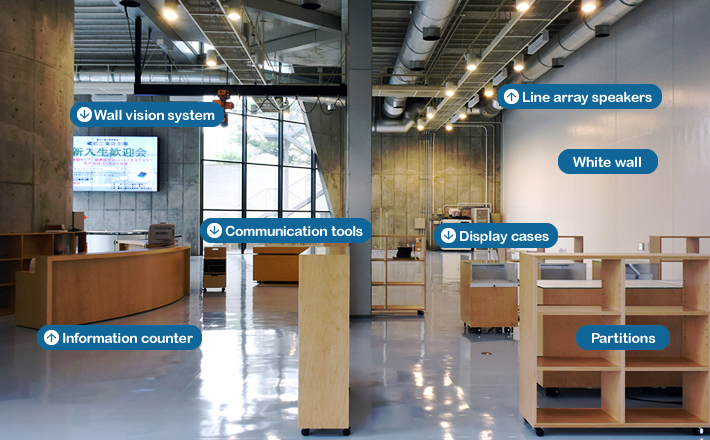
Renewed 1st floor
The Special Topics component of the Tokyo Tech Website shines a spotlight on recent developments in research and education, achievements of its community members, and special events and news from the Institute.
Past features can be viewed in the Special Topics Gallery.
Published: October 2015
. Any information published on this site will be valid in relation to Science Tokyo.


















